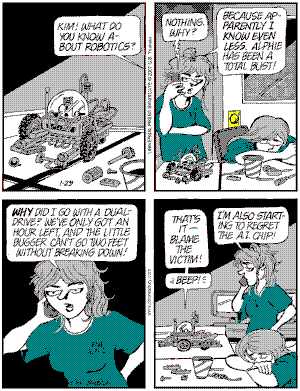The previous post quoted a passage from Turing's Cathedral ,
a 2012 book by George Dyson —
It should be noted that Dyson's remarks on "two species of
bits," space, time, "structure and sequence" and logic gates
are from his own idiosyncratic attempt to create a philosophy
based on the workings of computers. These concepts are not,
so far as I can tell, part of anyone else's approach to the subject.
For a more standard introduction to how computers work, see
(for instance) a book by an author Dyson admires:
The Pattern on the Stone , by W. Daniel Hillis (Basic Books, 1998).
PREFACE: MAGIC IN THE STONE
I etch a pattern of geometric shapes onto a stone.
To the uninitiated, the shapes look mysterious and
complex, but I know that when arranged correctly
they will give the stone a special power, enabling it
to respond to incantations in a language no human
being has ever spoken. I will ask the stone questions
in this language, and it will answer by showing me a
vision: a world created by my spell, a world imagined
within the pattern on the stone.
A few hundred years ago in my native New England,
an accurate description of my occupation would have
gotten me burned at the stake. Yet my work involves
no witchcraft; I design and program computers. The
stone is a wafer of silicon, and the incantations are
software. The patterns etched on the chip and the
programs that instruct the computer may look
complicated and mysterious, but they are generated
according to a few basic principles that are easily
explained. . . . .
Hillis's title suggests some remarks unrelated to computers —
See Philosopher + Stone in this journal.











